Monthly Archive: May 2015
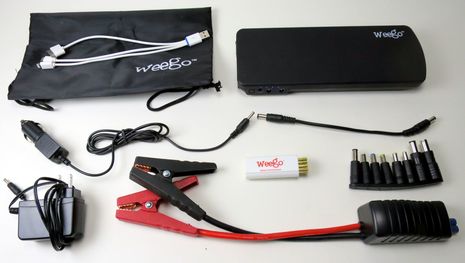
Most boaters will not experience the benefits of a Lithium Ion main battery bank any time soon, but nearly instant gratification is possible with a portable Li Ion charger pack, some of which can even jump start a small diesel engine. Brands and models are proliferating like fruit flies, but I’m particularly keen on the WeeGo Jump Starter Pro above, which I’ve been testing for a couple of months. It is a veritable Swiss Army knife of an on- or offboard power source…
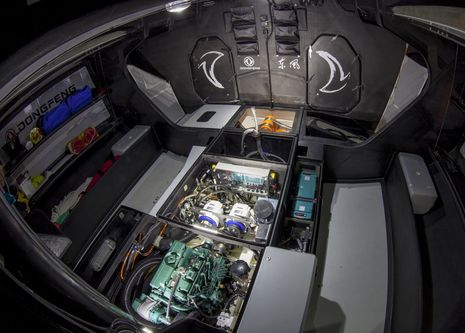 I’m happy as an oyster slow cruising Chesapeake Bay with my favorite first mate, but if I had a teleporter I surely would have jumped on an invitation to check out a Volvo Ocean 65’s systems in Newport yesterday. I doubt I would have encountered a scene as tidy as the photo above — which looks forward in the main cabin of Dongfeng with most of the engine, power, battery, and keel ram covers removed, as well as the pedestal galley — but then again all that technology has now zig-zagged almost around the planet in often demanding conditions. There’s a lot of gear on these one-design racers that has performed impressively, as best I know, but I’m particularly taken with the Mastervolt Lithium Ion battery system…
I’m happy as an oyster slow cruising Chesapeake Bay with my favorite first mate, but if I had a teleporter I surely would have jumped on an invitation to check out a Volvo Ocean 65’s systems in Newport yesterday. I doubt I would have encountered a scene as tidy as the photo above — which looks forward in the main cabin of Dongfeng with most of the engine, power, battery, and keel ram covers removed, as well as the pedestal galley — but then again all that technology has now zig-zagged almost around the planet in often demanding conditions. There’s a lot of gear on these one-design racers that has performed impressively, as best I know, but I’m particularly taken with the Mastervolt Lithium Ion battery system…
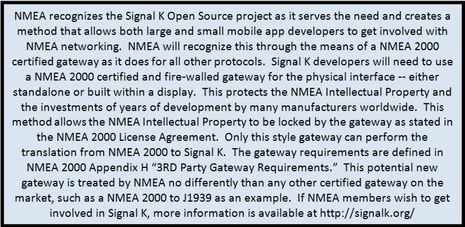 Wow! Today the National Marine Electronics Association — also known as NMEA, or IMEA for its International reincarnation — announced recognition of the Signal K open source marine data project. It’s clearly not an endorsement, but it does provide clear methods to gateway NMEA 2000 boat data to the Internet-friendly universal marine data model that the Signal K is about. And that’s plenty good enough, I think. In fact, as the title above wonders, this may turn out to be a very big deal. I also think it marks a nice evolution for NMEA. Though criticism of this trade and standards organization from outside the small world of hardcore marine electronics has largely been unfair, NMEA could do better fitting into the much bigger and faster-moving data/app universe, and now they’re trying harder…
Wow! Today the National Marine Electronics Association — also known as NMEA, or IMEA for its International reincarnation — announced recognition of the Signal K open source marine data project. It’s clearly not an endorsement, but it does provide clear methods to gateway NMEA 2000 boat data to the Internet-friendly universal marine data model that the Signal K is about. And that’s plenty good enough, I think. In fact, as the title above wonders, this may turn out to be a very big deal. I also think it marks a nice evolution for NMEA. Though criticism of this trade and standards organization from outside the small world of hardcore marine electronics has largely been unfair, NMEA could do better fitting into the much bigger and faster-moving data/app universe, and now they’re trying harder…
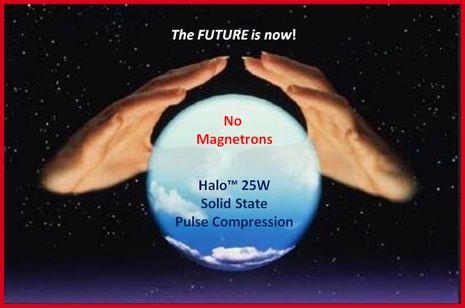 Panbo’s first entry about Simrad’s unique solid-state open-array Halo radar tried to cover the promised features. Now I’ll try to explain how it works, with the huge benefit of slides made available to me by Navico engineer Don Korte, who I first met when Broadband (3G/4G) radar was introduced in 2009. I’m starting with the image above because that’s not just Navico marketing; it would be hard to overstate Don’s enthusiasm for Halo as he led me through the presentation. It was a teleconference but I’m pretty sure he was jumping up and down as I slowly got some of the concepts and he answered my smarter questions with a hearty “YES!”…
Panbo’s first entry about Simrad’s unique solid-state open-array Halo radar tried to cover the promised features. Now I’ll try to explain how it works, with the huge benefit of slides made available to me by Navico engineer Don Korte, who I first met when Broadband (3G/4G) radar was introduced in 2009. I’m starting with the image above because that’s not just Navico marketing; it would be hard to overstate Don’s enthusiasm for Halo as he led me through the presentation. It was a teleconference but I’m pretty sure he was jumping up and down as I slowly got some of the concepts and he answered my smarter questions with a hearty “YES!”…
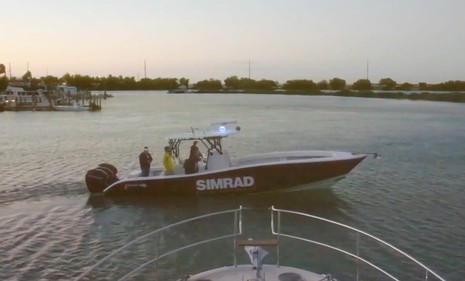
This is big. Today Simrad announced the first recreational solid-state open-array radar and it seems to be a humdinger. In January I got to see Halo in action aboard the same Yellowfin 36 seen above in a screen grab of Simrad’s informative Halo video, and I’ve also met twice with members of the engineering team. In fact, there are so many features with so much complex technology behind them that this entry will only attempt to cover what Halo hopes to do for you; next week we’ll get into how it works. And yes, this radar does include blue LED accent lighting, if you want it, but that’s just the bling…















